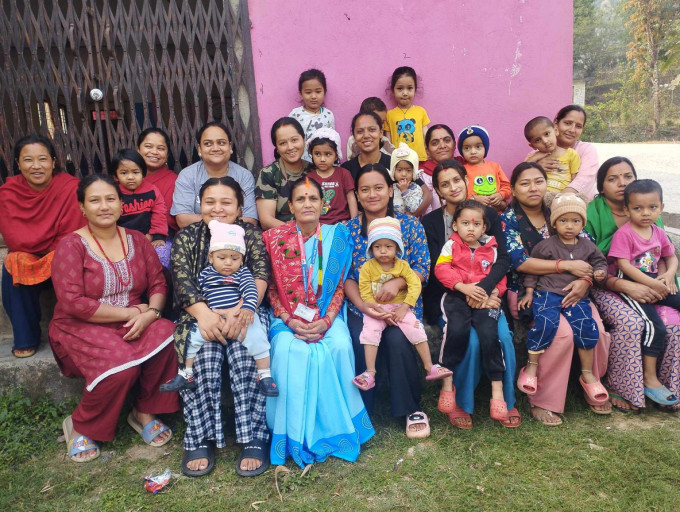Researchers have measured the stability and infectivity of four variants of SARS-CoV-2 in 5-10 um-wide aerosolized droplets over a period of 5 seconds to 20 minutes and found a reduction in infectivity by around 90% after 20 minutes; loss of infectivity was associated with relative humidity and aerosol pH, providing insight into the mechanisms that control the airborne infectivity of SARS-CoV-2 and suggesting that measuring ambient CO2 levels might help estimate disease transmission risk, according to the scientific journal PNAS.
The ongoing coronavirus disease 2019 (COVID-19) pandemic has demonstrated the requirement for an improved understanding of the factors that govern the relative importance of different modes of transmission of respiratory pathogens, including the parameters that influence droplet, fomite, and airborne transmission. Indeed, shortcomings in our understanding have prolonged the debate surrounding the likelihood of airborne transmission of severe acute respiratory syndrome coronavirus 2 (SARS-CoV-2), with consequences for the implementation of nonpharmaceutical interventions and mitigation strategies such as physical distancing, the wearing of face coverings, and the use of ultraviolet (UV) germicidal irradiation. Currently, epidemiological evidence, air sampling studies, and animal-model studies are broadly consistent with transmission dominated by the inhalation of infectious aerosol (<100-um diameter). Transmission over distances beyond 2 m has been documented and tends to be under preventable circumstances, such as occurring after prolonged exposure in poorly ventilated rooms.
Reports of the airborne stability of SARS-CoV-2 consistently indicate that the half-life associated with the decay in viral infectivity is on the order of hours in surrogates of respiratory aerosols. However, a detailed understanding of the processes that govern the airborne longevity of viruses, and how infectivity is affected by basic environmental conditions such as relative humidity (RH) and temperature, is required. More specifically, there is little clarity on the impact of environmental conditions on the microenvironment within an airborne droplet and the interplay between this microenvironment and the stability of pathogens. Improved models of the physicochemical properties of respiratory aerosol and the processes that transform particle size, moisture content, composition, and phase are essential to provide clearer insights into the relative risks of airborne transmission in different environments and the potential benefits of mitigation measures to reduce transmission. Indeed, it should be recognized that transformation processes lead to transient changes in properties (e.g., surface enrichment in salts during evaporation following droplet exhalation) that can have impacts on infectivity distinct from the steady state equilibrium properties that persist over longer time periods during airborne transport (e.g., an equilibrated salt concentration).
The microenvironment within an airborne droplet is multifarious and notoriously difficult to study and is further complicated by the presence of organic macromolecules and microorganisms. While the vast majority of indoor aerosols originate from sources such as candles, dust, outdoor air pollution, and food cookers, respiratory pathogens are transmitted in exhaled aerosol that can span from 100-nm to 100-mm diameter and have emission rates as low as 10 particles s-1 when humans breathe. Regardless of the expiratory activity that generates respiratory aerosols [e.g., coughing, speaking], the high surface area-to-volume ratio of the emitted particles facilitates rapid equilibration to the surrounding gas phase composition. In particular, the equilibration of the water activity within the droplet to the surrounding RH impacts the physicochemical conditions experienced by microorganisms present within the aerosol. Aqueous respiratory droplets at the point of exhalation start with a very high water activity (~0.995) consistent with equilibration with the high RH within the respiratory tract but must adjust to equilibrate with the indoor humidity, which is typically within the range 20 to 60 per cent. Under most conditions, exhaled aerosol droplets rapidly lose both moisture and heat through evaporation, with large concomitant changes in volume and temperature as they establish an equilibrium with the indoor environment.
Not only does the loss in water lead to an increase in solute concentrations during evaporation but also the absence of heterogenous nucleation sites (i.e., a surface) leads to supersaturated solute concentrations that cannot be achieved in the bulk solution phase or in sessile droplets deposited on surfaces. At sufficiently low RH (e.g., below 45 per cent for saline solution droplets), the supersaturation of solutes can be sufficient to induce homogenous nucleation of the salt fraction, leading to efflorescence (crystallization) of the droplet and the formation of a dryer particle. Furthermore, during the initial period of droplet evaporation, the rates of diffusion of microorganisms within the droplet can be significantly slower than the rate at which the droplet surface recedes, leading to their exclusion to the near-surface region of the droplet. Given that the physicochemical conditions at the surface of the droplet can be different to the core (e.g., surface enrichment in solute concentration), establishing the distribution of microorganisms within a particle may be crucial to understanding the impact of aerosol microphysics on their longevity.
Once the moisture content of the aerosol has decreased to establish equilibrium with the ambient environment, the decay in microorganism survival may be regulated by steady-state microphysical properties. In particular, the typical range in ambient RH is consistent with equilibrated solute concentrations that are supersaturated in the exhaled aerosol. Although the mechanism remains unclear, high salt concentrations may inactivate viruses by damaging the viral nucleic acid. With high contents of organic macromolecules, phase-separated particles with organic- and inorganic-rich domains or amorphous particles containing trapped moisture may form, potentially enhancing viral and bacterial survival. Furthermore, the pH of aerosol particles is RH, size, and composition dependent, and the pH of aerosol droplet surfaces may be different from the droplet bulk. Indeed, predicting the evolving aerosol pH is challenging, particularly when the facile partitioning of water-soluble acidic and basic components from the ambient environment is considered, even before the influence of aerosol pH on microorganism survival is considered.
Laboratory strategies to assess the airborne stability of a pathogen must either be capable of simulating every aspect of the real-world environment in which transmission occurs or sufficient control over the conditions must be achieved such that the influence of individual processes and properties on survival can be assessed independently. Goldberg rotating drums have been widely used over many decades to assess airborne pathogen stability and have been used to investigate the airborne survival of SARS-CoV-2. More specifically, studies have examined the dependence of infectivity on time (20 min to 16 h), RH (40 to 70 per cent), and the presence of UVC light with measurements in aerosols composed of cell culture media (Dulbecco's modified Eagle medium [DMEM] and minimal essential media [MEM]) and artificial saliva. All studies concentrate on equilibrated particle sizes of ~5 um (mass median aerodynamic diameter). A nebulizer is used to generate a cloud of aerosolized pathogen that is suspended by the rotation of the drum. The initial environmental conditions within the drum can be controlled by mixing the output of the nebulizer with a flow of humidity- and temperature-controlled air. However, operation with stable environmental conditions can be challenging; for example, as the droplets evaporate and equilibrate to the set humidity, the water they release can cause the humidity within the drum to increase. In addition, dynamic changes in liquid water content within the freshly nebulized aerosol-cloud do not replicate the very rapid changes that can accompany the extremely low concentrations of the exhaled aerosol. This precludes any study of short-term decreases in pathogen viability that may be critical to understanding close contact transmission and the immediate consequences of exhalation on microbe survival.
The researchers have previously reported a unique approach to the study of infectious aerosol and the interplay between aerosol microphysics and pathogen survival, using complementary aerosol analysis techniques to assess the underlying mechanisms that govern the airborne longevity of pathogens. The aerosol stability of viruses and bacteria is investigated using the CELEBS (controlled electrodynamic levitation and extraction of bioaerosols onto a substrate) technique. In CELEBS, a small population (<20) of near-identical monodisperse droplets containing bacteria or viruses are trapped within an electric field, while a constant flow of air prevents the accumulation of released water around the droplets. Loading droplets into the CELEBS takes <0.1 s, and there is no physical loss of droplets over time. Thus, an assessment of the viability of suspended microbes within droplets can be made after periods of suspension varying between less than 5 s to many hours. These longevity measurements can then be contextualized with detailed measurements of the dynamic changes in the physicochemical properties of droplets generated the exact same way in an instrument referred to as the comparative kinetic-electrodynamic balance (CK-EDB). The CK-EDB uses the same piezoelectric droplet-on-demand dispensers as the CELEBS to generate droplets, with particles captured in the path of a laser within a flow of humidity and temperature-controlled air. The elastic light scattering pattern can be used to infer the size and structure of these droplets within the same environmental conditions as those used in CELEBS.
By coupling the time-sensitive measurements of the physicochemical properties of the droplets (CK-EDB) with the downstream biological effects (CELEBS) on the same timescale, the systematic exploration of hypotheses regarding the inactivation mechanisms of viruses and bacteria is possible. In this study, we apply this approach to the study of SARS-CoV-2 survival in airborne droplets of cell culture medium, examining the survival over timescales spanning from <20 s, commensurate with the evaporation of freshly exhaled aerosol, through to 20 min. By studying the physicochemical changes that take place in the droplet and exploring how these changes impact the infectivity of the virus, we elucidate the effect of the airborne environment on SARS-CoV-2. This study provides insights into the potential influence of environmental conditions on COVID-19 transmission.
READ ALSO:









